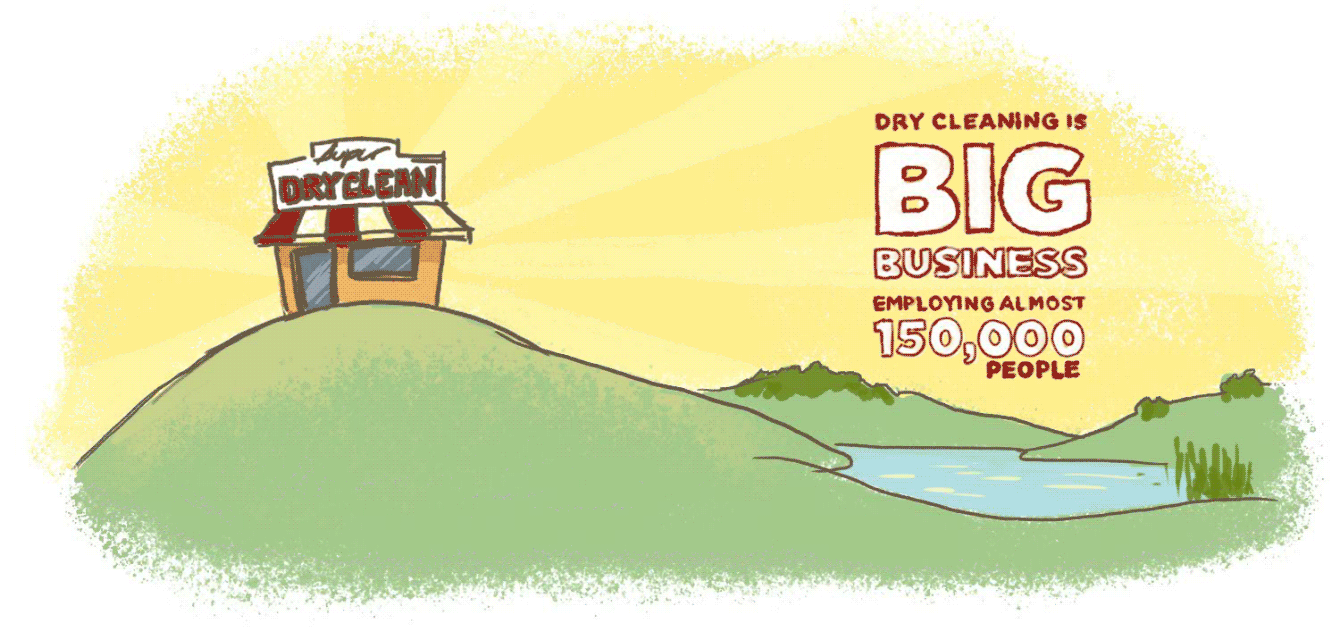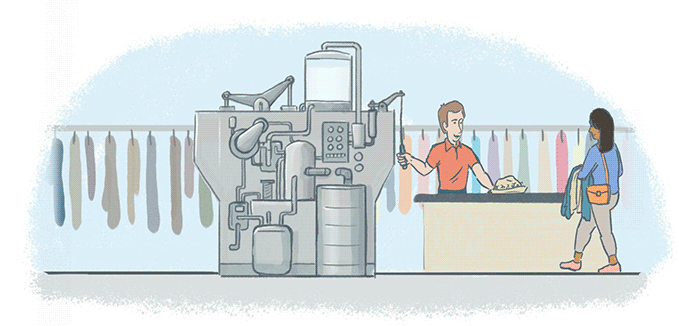Dry cleaning doesn’t have to be a dirty word!
Moving towards safer, more sustainable dry-cleaning solvents

Dry cleaning is big business. Every year people spend approximately $9 billion1 on dry cleaning at any one of 37,000 dry cleaners in the US, many of which are small family-owned businesses.
To process all of these clothes requires the work of almost 150,000 people, which makes dry cleaning big business and a good source of employment — yet the chemicals used in the process can pose a risk to the environment and to human health if not handled appropriately.

Cleaning up
Dry cleaning lets us clean fabrics that can’t be machine washed and helps delicate clothes stay brighter and last longer. The industry isn’t going to disappear, so it’s important that dry-cleaning solutions are safe and sustainable, now and in the future. ExxonMobil DF-2000™ fluid is part of a new generation of solvents: highly effective, better for people and better for the environment.
Solving for dangerous solvents
The first solvents to be used were highly flammable, which led to the introduction of perchloroethylene (PERC) a non-flammable solvent. But PERC2, is considered a likely human carcinogen that, when mishandled, can harm aquatic habitats and contaminate drinking water and the air we breathe.
PERC is also subject to an increasing number of controls and regulations. The US EPA first regulated PERC in dry cleaning facilities in 1993 and has been tightening these restrictions ever since.3 California will implement a state-wide ban on PERC in dry-cleaning by 2023.4
Concerns about PERC have led to the creation of a new generation of dry-cleaning solvents.

DF-2000™: A safer option
ExxonMobil Product Solutions has developed DF-2000, an isoparaffinic hydrocarbon-based fluid that is an effective replacement for PERC. DF-2000 reduces the risk of harmful exposure, emissions and waste in the dry-cleaning industry, consistent with several UN Sustainable Development Goals (SDGs)5. In fact, the risk of overexposure to workers is 350 times less with DF-2000 dry-cleaning fluid6 and DF-2000 is morethan 1,000 times less hazardous to the aquatic environment than PERC.7

Clean clothes, happy fish
Highly effective, better for people and better for the aquatic environment; that’s why ExxonMobil DF-2000 is considered the more sustainable solution for dry cleaning.
With ExxonMobil DF-2000, dry cleaning doesn’t have to be a dirty word!
2https://drycleancoalition.org/finrule.cfm
3 https://www.epa.gov/stationary-sources-air-pollution/dry-cleaning-facilities-national-perchloroethylene-air-emission
4 https://ww2.arb.ca.gov/our-work/programs/phase-out-perchloroethlyene-dry-cleaning-process/dry-cleaning-program
5 https://www.un.org/sustainabledevelopment/sustainable-development-goals/
6 Based on the vapor hazard ratio at ambient temperatures
7 Whittaker, S.G., Evaluation of DF2000™ Dry Cleaning Solvent in an Acute Fish Toxicity Test, Local Hazardous Waste Program in King County, Washington, May 2014
